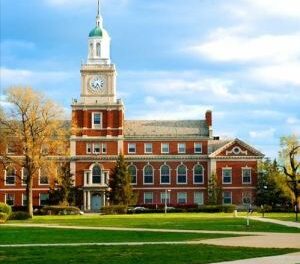September was a deadly month of shootings in Birmingham including a mass shooting in Five Points South that left four people dead, and 17 others wounded. There have been five additional homicides in the month since that mass shooting. (Adobe Stock)
” data-medium-file=”https://www.birminghamtimes.com/wp-content/uploads/2024/10/AdobeStock_4090724031-300×200.jpeg” data-large-file=”https://www.birminghamtimes.com/wp-content/uploads/2024/10/AdobeStock_4090724031.jpeg” tabindex=”0″ role=”button” />
By Carla Lewandowski and John A. Shjarback
theconversation.com
Gun-related homicides have dropped 40 percent in 2024 in the Philadelphia region, saving countless lives in the area.
Meanwhile, gun-related homicides have soared in Birmingham. At last count, homicides in Birmingham were up more that 15 percent compared to the same time in 2023 and that was before a deadly September that included a mass shooting in Five Points South left four people dead, and 17 others wounded in the month. There have been five additional homicides since that mass shooting.
Birmingham ended 2023 with 135 homicides. So far this year, through last month, a deadly shooting on Sept. 28 marked the city’s 127th homicide. Of those, eight have been ruled justifiable and two others happened in previous years, but the victims died in 2024.
Philadelphia experienced a surge in shootings and homicides during the COVID-19 years that disproportionately affected young Black and Latino men in economically disadvantaged neighborhoods with drug markets.
In 2020, Philadelphia had 499 homicides — nearly 150 more than the previous year. Gun violence worsened in 2021 — with 562 homicides that year — and then dropped slightly in 2022.
In Philadelphia, recent data shows a notable decline in these crimes over the past two years. As of late September 2024, homicides are down 40 percent for the year to date compared with 2023. And the number of shooting victims has decreased similarly — from 1,236 in the first eight months of 2023 to 758 for the same period in 2024.
As professors of criminal justice who live in Greater Philadelphia, we know that there is no single explanation for the drop in gun violence. Rather, many factors at both the local and national levels could be playing a role.
Police And Justice System Return To (Sort of) Normalcy
A shortage of police — driven by pandemic-era resignations, retirements and injuries — significantly affected cities like Philadelphia.
Additionally, the Philadelphia Police Department’s number of traffic and pedestrian stops dropped drastically. This was due to both the need to adhere to social distancing guidelines during the COVID-19 pandemic and a widespread reluctance among officers to engage with citizens after massive protests in response to the murder of George Floyd. In fact, the number of documented stops plummeted by 83 percent from 2019 to 2020 alone.
As the year progressed, the department struggled with officers’ abuse of the Pennsylvania Heart and Lung Act. This statewide disability program allows police and firefighters injured on the job to collect their full salaries.
By September 2021, 14 percent of Philadelphia patrol officers were out of work on “no duty” disability leave, according to investigations by both The Philadelphia Inquirer and the city controller.
Though up-to-date data is unavailable, there was a 31 percent drop in injury claims by December 2022, 10 months after the Inquirer investigation was published.
More recently, the Philadelphia Police Department has attempted to increase its ranks through intensified recruitment efforts. It also lowered physical requirements and eliminated certain residency restrictions.
Despite these efforts, staffing remains nearly 20 percent lower than in 2019. This places considerable strain on the existing workforce.
In Birmingham, Mayor Randall Woodfin said last week the Police Department (BPD) will prioritize the hiring of 172 patrol officers to achieve staffing targets in the police precincts. That number is part of a recruitment and retention plan the mayor has outlined to address the staffing shortages in BPD, he said.
Woodfin also has proposed a $15.8 million plan for recruiting and retaining officers for the Birmingham Police Department, a step he told the City Council was “necessary” in light of the growing number of homicides in the city.
Of course, the COVID-19 years considerably affected the entire criminal justice system and beyond in Birmingham and Philadelphia. Courts operated in a limited capacity, cases backlogged, probation and parole officers were less able to supervise individuals in the community, and the jail population was reduced. Philadelphia (and Birmingham’s) array of community- and hospital-based violence intervention programs were also disrupted.
The post-pandemic resumption of court operations, improved violence intervention programs, police recruitment efforts and reduced disability claims may help explain the recent drop in shootings in Philadelphia.
New Leadership And Crime-Fighting Strategies
Reducing gun violence was a top campaign issue during Philadelphia’s 2023 mayoral race.
Philadelphia Mayor Cherelle Parker, elected on a law-and-order platform, declared a public safety emergency on her first day in office.
She also appointed Kevin Bethel as police commissioner in charge of the more than 6,000-member force. Bethel, second in command under former Commissioner Charles Ramsey, quickly released a 100-day plan that focused on crime reduction in high-crime districts, shutting down open-air drug markets in Kensington neighborhood and reinforcing federal partnerships to tackle violent crime.
Philadelphia has also adopted new policing strategies and technologies.
In early 2022, before Parker and Bethel’s tenure, the Philadelphia Police Department under former Commissioner Danielle Outlaw designated a new unit to investigate nonfatal shootings. In 2021, only 17 percent of nonfatal shootings led to arrests, a failure that can fuel retaliatory violence, legal cynicism — which refers to a drop in trust of the legal system — and communities resorting to self-policing.
While it’s not yet clear what effect the new unit has had in Philadelphia, research shows such units that prioritize resources to solving nonfatal shootings in places such as Boston and Denver have reduced gun violence.
More recently, the city began deploying mobile surge teams on weekends to flood high-crime areas with officers to deter potential criminal activity.
Meanwhile, Temple University attributes the reduction in crime within its patrol areas to the implementation of safety measures, including new equipment for officers such as firearms and radios, upgraded security cameras and advanced technology such as license plate readers, which help identify stolen vehicles or those linked to criminal behavior.
Recently, the City of Birmingham’s Real Time Crime Center was recently awarded $4.5 million as part of the federal government’s 2024 Consolidated Appropriations Act.
BPD will use these monies to purchase additional cameras and position them in high-crime areas, according to Police Chief Scott Thurmond. The data will feed directly into the City’s Real Time Crime Center.
National Crime Trends
While local initiatives have likely contributed to Philadelphia’s drop in violent crime, these improvements also fit into national crime trends as cities across the U.S. experienced similar declines.
Economics and public safety expert John Roman, for example, attributes both the rise and fall of violence to pandemic-related losses in government staffing and functionality, which he argues returned to pre-pandemic levels in late 2023.
Roman shows how 1.3 million government jobs were lost nationally at the outset of COVID-19, with 75 percent of the losses coming at the local level. These local government employees, such as social and outreach workers, often connect people in marginalized communities that bear the brunt of gun violence to crucial services such as trauma counseling, victim advocacy and legal assistance.
In Philadelphia, approximately 3,000 local government jobs were lost between 2019 and 2022. The reopening of social services and increase in those jobs and community-based interventions post-pandemic may have helped stabilize Philadelphia’s neighborhoods.
Crime trends tend to ebb and flow. This current drop in Philadelphia appears to align with a national de-escalation in violent crime. These factors, alongside the statistical phenomenon of regression to the mean — where crime rates normalize after extreme spikes — apply to both national and local crime rates.
Some researchers, including Roman, have also considered the possibility that the recent 2020-2022 homicide peak killed a portion of the most violent offenders who drive shootings in their neighborhood. It’s based on the concept of the victim-offender overlap that those at the highest risk of violence are often offenders themselves.
But crediting Philadelphia’s decline in homicides and violent crime to any single cause oversimplifies a much more intricate picture. While the exact causes of these shifts are complex, understanding the interplay of local and national forces is essential to sustaining this positive trajectory in Philadelphia.
Carla Lewandowski and John A. Shjarback of Rowan University wrote this article for The Conversation, an independent and nonprofit source of news, analysis and commentary from academic experts.











